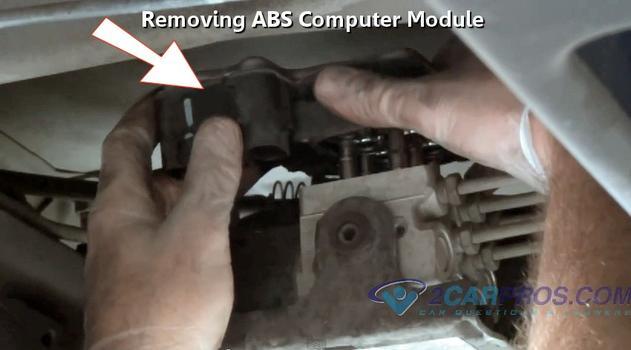Don't draw any conclusions related to a brake pull or lack of it. Most front-wheel-drive vehicles use the split-diagonal systems because the rear brakes only do about 20 percent of the stopping. If the front system sprung a leak, the rear brakes would just lock up and they'd find you in the next county before you could stop. With the split-diagonal system, you'll always have one front brake working. On older rear-wheel-drive cars and trucks, disabling one caliper WOULD cause a severe pull toward the working brake. On front-wheel-drive vehicles, a built-in, non-adjustable alignment angle called "scrub radius" is modified that actually makes a tire pull toward the center of the car during braking. That pull counteracts the brake pull. Chrysler has been especially successful at eliminating any hint of a pull under that condition. At most you might get a little momentary wobble in the steering wheel as the brakes are being applied.
If the fluid got contaminated, you're in for a REAL expensive repair. First you'll need to determine how that happened. Two common ways are wiping grease from your hands after greasing the suspension or repacking wheel bearings, then using your fingers to push the bladder seal back into the reservoir cap. It's important to wash your hands first to remove all grease residue.
The second common way is from using a funnel that was previously used for engine oil, transmission fluid, or power steering fluid. Wiping out the residue is not sufficient. If that same funnel must be used, it must be washed thoroughly with brake parts cleaner. Professionals would never risk using the same funnel for brake fluid and other products.
The only proper repair for a petroleum problem is replacement of every component that contains rubber that contacts the fluid, and flushing and drying the steel lines. That means wheel cylinders, calipers, the four rubber hoses, master cylinder, combination valve, and height-sensing proportioning valve must be replaced along with the anti-lock hydraulic modulator assembly. If any part is not replaced, the contamination will leach out of the rubber seals and o-rings in that part and recontaminate the other new parts.
Beyond that, I have to be convinced the fluid really is contaminated. That's pretty rare so don't jump in and start replacing parts unless you're sure that's the problem. Instead, crack open the steel lines in various places to see where the fluid will release pressure and where it won't.
Sunday, February 21st, 2021 AT 1:16 PM



